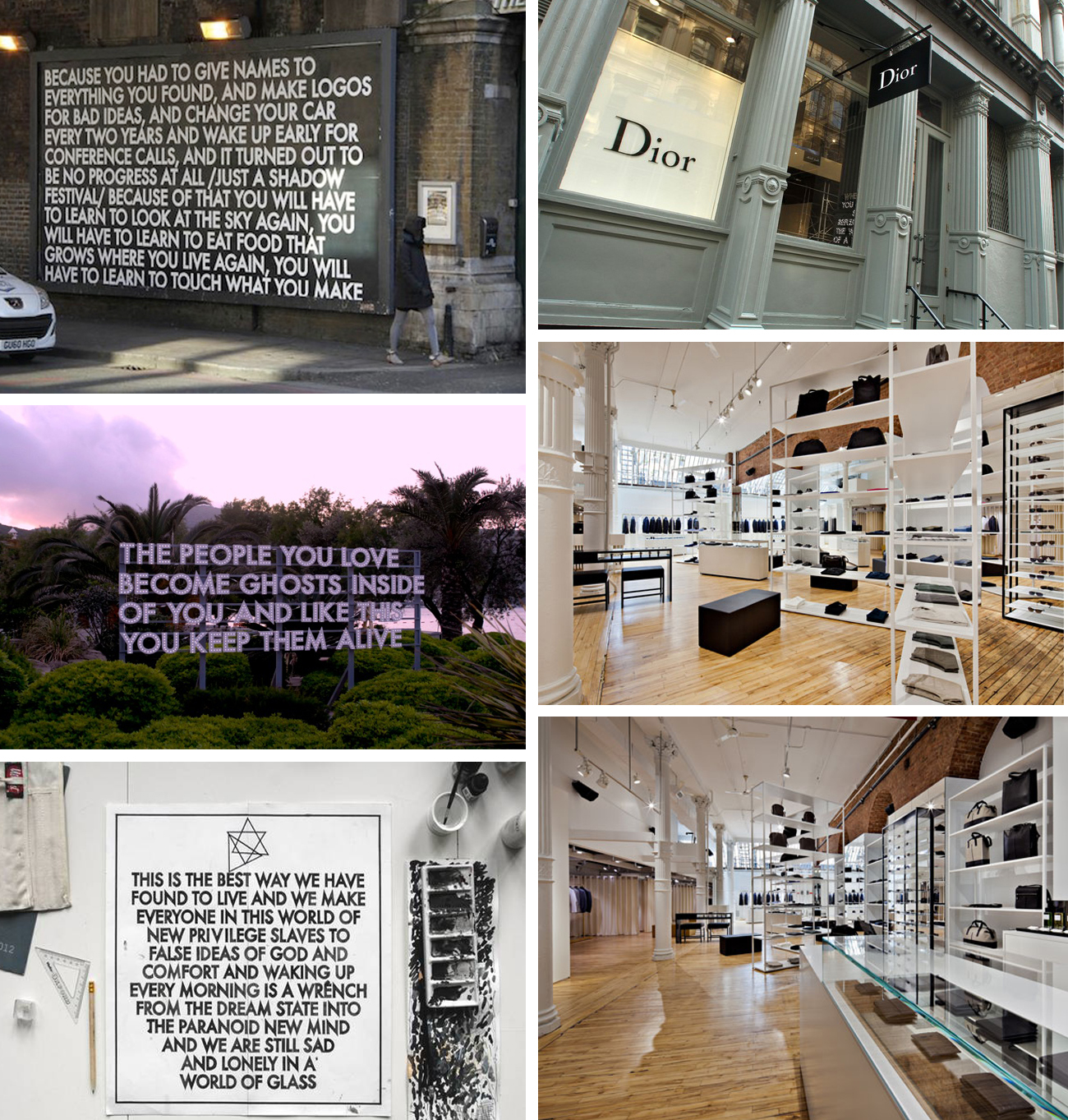Greene Street today.
The artists revived the neighborhood, which then attracted luxury retail stores and residential lofts. For the most part, artists were priced out of the neighborhood and moved on to wherever rents were cheap and space was plentiful— Williamsburg, Brooklyn in the 1990s.
Dior Homme pop-up opening, 2012. Found at Haberdasher.

Stores on Greene Steet, Spring 2015:
Ralph Lauren
Paul Smith
Alessi
Proenza Schouler
Dior
Costume National
Hugo Boss
Warby Parker
Brunello Cucinelli
SoHo Apple Store
Ralph Lauren
Paul Smith
Alessi
Proenza Schouler
Dior
Costume National
Hugo Boss
Warby Parker
Brunello Cucinelli
SoHo Apple Store
This living room is part of a 4,430 square-foot loft at 102 Prince Street, just across from the southern end of the Greene Street block; it was on the market for $10.5 million in April, 2015. It was also featured in the movie Ghost in 1990.
102 Prince Street, CurbedNY.
Saint Laurent Paris interior at 80 Greene Street, their only downtown store, opened just off the block in 2013. Found at YSL.com.
The sky-high prices and luxury culture of Greene Street would come as a great surprise to urban planners who called the block defunct in the 1950s; to unemployed shantytown residents in the 1930s; and to those who worked the Bayard or slave-owned farms centuries earlier.
Today's Greene Street block is not the end of its history. What will tomorrow's block look like?
Today's Greene Street block is not the end of its history. What will tomorrow's block look like?
When we zoom in on one block rather than a city or a country, we see an economic history of surprising rises and falls instead of steady trends — and yet together these small units make possible the steady trends. We see how everyday actions by ordinary individuals play a larger role in the history of development than we tend to acknowledge.
Greene Street's future development has as much to do with this small-scale, volatile chance as it does with methodical planning.
Greene Street's future development has as much to do with this small-scale, volatile chance as it does with methodical planning.
We argue that the micro level, with its spontaneity and unpredictability, is vital for understanding development at any level.
Planners beware.
Planners beware.
. . . A Long History of a Short Block.
